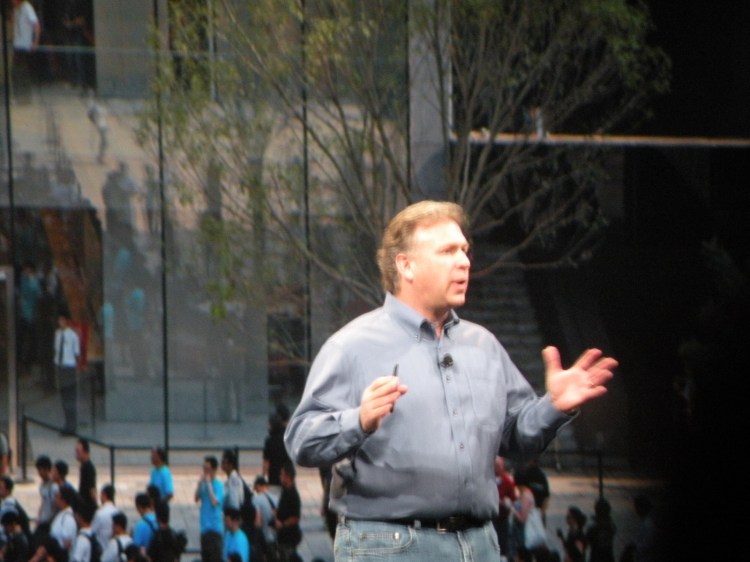Every year, journalists start CES with faint optimism and conclude with disappointment; as the song goes, they thought the future would be cooler. At some point right as the show is ending, someone will typically float Apple — which officially skips CES every year — as either the cause of the show’s boredom or its future savior. Right on cue, analyst and former Apple marketing director Michael Gartenberg today published the latest version of this pitch, titled “It’s Time For Apple to Go to CES.” I agree with much of what he says, but respectfully disagree with that conclusion.
I’m uniquely positioned to discuss this topic for a few reasons. I created CES’ incredibly popular Apple product exhibition area, the iLounge Pavilion, which kept growing until it filled the equivalent of more than two football fields. During the same time, I covered virtually all of Apple’s major events, including speaking with people behind the scenes. Last but not least, I’ve held no stock in Apple and have no stake in its success or failure, other than as a customer.
My position: Apple’s 2009 withdrawal from trade shows may have been justifiable back then, but the overall impact has been negative. Additionally, Apple’s related decision to move most of its product launches to a single quarter each year has damaged the brand, despite the strength of Apple’s sales and stock. However, unless certain highly improbable changes are made at CES, this particular trade show is not the right venue for Apple. Instead, the company should leverage its incredible retail infrastructure to do something different.
Apple and trade shows
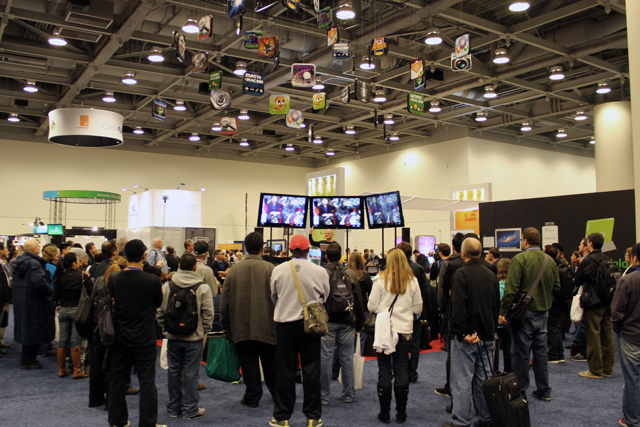
June 5th: The AI Audit in NYC
Join us next week in NYC to engage with top executive leaders, delving into strategies for auditing AI models to ensure fairness, optimal performance, and ethical compliance across diverse organizations. Secure your attendance for this exclusive invite-only event.
In December 2008, when Apple withdrew from exhibiting at future trade shows, the company described them as “a very minor part of how Apple reaches its customers.” It also downplayed the importance of professional shows such as NAB and regional shows including Apple Expo Paris. The logic seemed simple: Why prepare a keynote and staff a booth to reach perhaps 100,000 attendees when Apple Stores collectively had “more than 3.5 million people visit every week?”
To Apple-focused journalists, the real reason behind the change was becoming clearer: Then-CEO Steve Jobs was looking thinner with every keynote, and as his illness progressed, he had more important things to accomplish than working on speeches. No one else could take ownership of Apple’s keynote process at that point, and without a keynote — pulling the cloth off of surprises that would then be offered for public examination — an Apple trade show booth wouldn’t be exciting.
Sure, Apple participated in trade shows as marketing events, primarily to spread the news on new products. But the keynotes also became cultural events, actually setting the tone for both the technology industry and arguably human progress as a whole. What if everyone could easily access the real internet from a pocket-sized device? What if a portable computer could be made so light and easy to use that kids and grandparents could figure it out? There was good reason to tune in and see what Apple was announcing: The devices might, in fact, change the world.
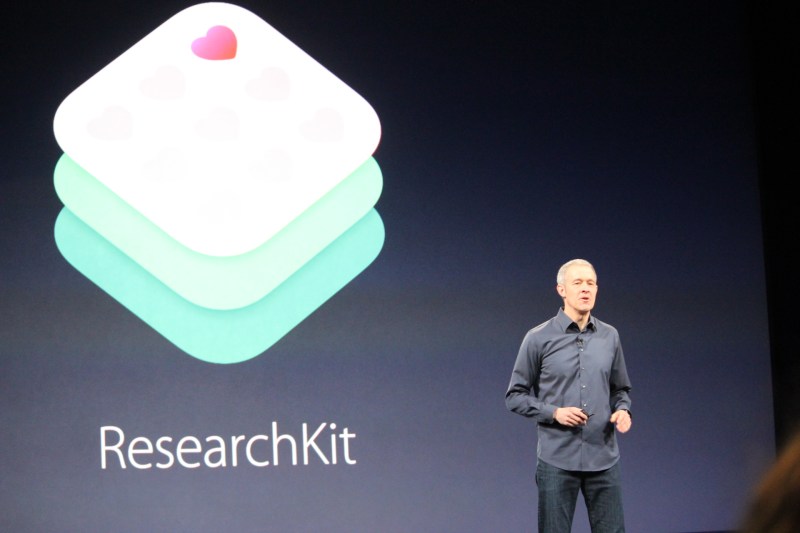
Above: Apple’s Jeff Williams introduces ResearchKit at a media-only Special Event.
Apple sometimes still hosts “Special Events” around March solely for hand-picked audiences, as well as small demonstrations at events like NAB, but they’re exceptions to the rule. Yet a company that will likely have nothing to say for half the year can’t dominate the media like one that’s always on the cusp of a major announcement. Stock price aside, both the company and the world have been measurably worse off without the enthusiasm generated by these events.
There are also products, most notably the Apple TV, that could have made much bigger splashes with keynote and booth marketing. Imagine if Apple had debuted the first downloadable Apple TV games and proper game controllers at E3? Or if it had launched the pulse and workout-tracking Apple Watch at Medica, the largest health care trade show in the world? Much of the “so what” shrugging that followed their launches might have been avoided if they’d been presented initially in the strongest possible environments.
Apple’s predictable, boring calendar
On a highly related note, Apple never formally said that it was going to stop staggering major new product releases across the year, but that’s effectively what happened: Since Tim Cook took over, Apple has announced almost nothing of significance until WWDC in June, and the vast majority of new products are released during a narrow window from mid-September to early November.
Key Apple executives have spoken proudly about refreshing most of the product lineup simultaneously, as if having a hundred new device models, sizes, colors, and capacities hitting stores over 4-5 weeks was a great thing. That’s cool for people who manage supply chains, but it’s overwhelming and not particularly great for consumers.
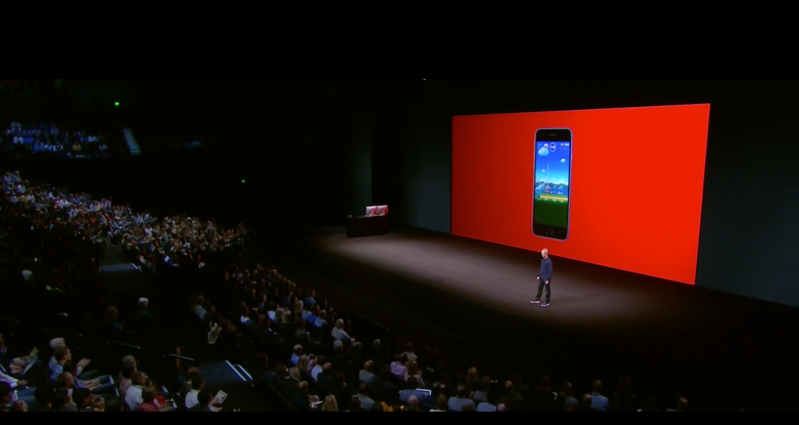
Above: Apple chief executive Tim Cook onstage at Apple’s event in San Francisco on September 7, 2016.
Dropping a huge load of stuff all at once is the opposite of what Apple did under Steve Jobs. The company used to keep people excited all year about new Apple products, generally debuting only one or three of them at a time. Staggering new releases across each year gave people a chance to spend their limited income on Apple products at times other than the holidays, keeping Apple’s stores buzzing (not just busy) year-round.
The only positive Apple has accomplished for consumers with the “all at once” tactic has been to create some sense of purchasing predictability. If you’re wondering whether there’s going to be a new iPhone, Mac, Apple TV, or Apple Watch any given year, the answer is now most likely “yes, around September or October.”
Some people have suggested that fewer events are the natural result of maturing products — version 1 deserves a splashy event whenever, but no one will care to show up for the “special” debut of a slightly slimmer version 2, or a waterproof version 3, which could arrive via press release. That’s Apple’s problem to remedy, partially with more breakthrough products, and partially with developer engagement and marketing to show how seemingly small changes — say, adding a game controller and games to the Apple TV — could disrupt an entire industry.
Does Apple need to do CES, specifically?
Gartenberg’s pitch for getting Apple to CES is that “Apple’s presence was always felt” at CES regardless of its lack of attendance, and that CES is lacking in big, quality announcements these days. “Tim Cook and Apple’s superb executives could put together a keynote that showcases not just the company’s products but its vision for the new year.” I agree on all of those points.
But when Apple stopped attending Macworld Expo, another subtext left out of its “no more trade shows” press release was that in Steve Jobs’ view, January keynotes only served to delay purchases that would have been made during the prior holiday. It was also suggested that this obligation wrecked the holidays every year for people who had to prepare keynote presentations and demos — including Jobs and the employees closest to him. Other Apple employees also suggested that the company didn’t enjoy attending events where it had to share floor space with rival companies.
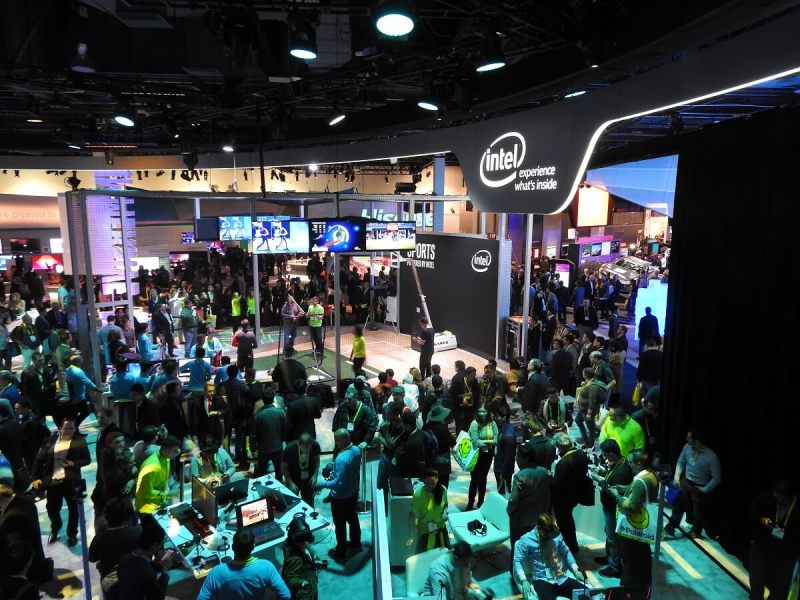
Above: CES attracts thousands of exhibitors, within which Apple would be only one.
There was also some performance anxiety. Put aside the virtue of infrequent, category-creating January debuts such as the first iPhone and iPad. What is Apple supposed to show every other January, and what huge vision is it going to lay out every year? At what point does Apple hold off on releasing ready-for-Christmas Macs, just to have something “new” to share at the keynote a month later?
Furthermore, CES has a seniority-based space allocation system, which is highly problematic for companies that haven’t been exhibiting for decades — it’s likely why Google had to set up its booth in a parking lot this year, only to get rained out. Believe it or not, CTA wouldn’t necessarily make an exception to its space rules for Apple, citing its impartial stewardship of the entire consumer technology industry.
So unless CTA is willing to make some big changes, it’s not time for Apple to go to CES. But it is time for Apple to rethink the negative impact that its narrow keynote and product release schedules are having on its business and the larger technology industry. People do appreciate when Apple takes on an industry leadership role, and they do want old Apple-style excitement, but that doesn’t need to happen at old trade shows.
A better option: Apple Stores
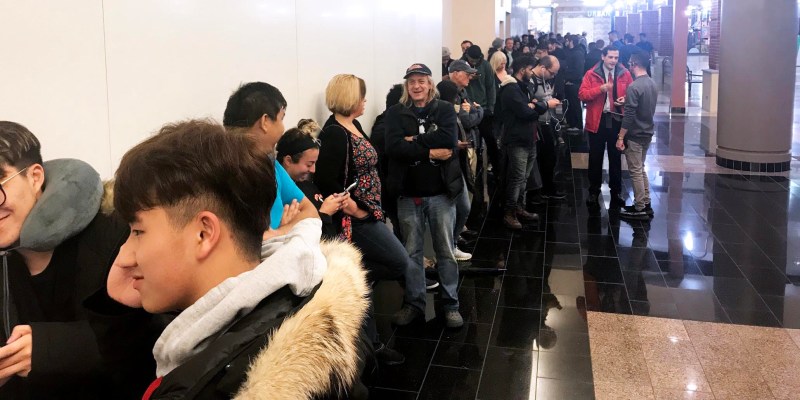
Above: Hundreds lined up at Buffalo, NY’s Apple Store for the iPhone X, October 2017.
Perhaps Apple’s “goodbye, Macworld” press release had the best idea of them all: Since Apple’s retail stores see millions of visits per week, why not bring them all together once or twice a year for global-scale special events?
Live from Apple Park’s Steve Jobs Theater, the company could simultaneously broadcast a keynote to all of its retail stores, complete with a window of limited hands-on time with new products for press and customers. Imagine the lines and the local media coverage; they would be off the charts, and diversify the voices offering perspectives on new Apple products.
Though attendance would be limited somewhat by individual store floor space, the number of people in the aggregate would probably be larger than any CES. Would they actually come? Of course. For true Apple diehards, the ability to attend something like this — especially if it was local — would probably be worth taking the day off work. On Apple’s side, all it would require is existing retail staff, augmented by some extra security for whatever new products were arriving.
The infrastructure’s all there; all Apple has to do is decide to use it properly, and trust its people to take on such a global-scale event. For many companies, participating in a single-location trade show isn’t a bad idea. Apple’s unique footprint and ambitions give it the perfect excuse to pioneer massively multi-location events at its stores.
